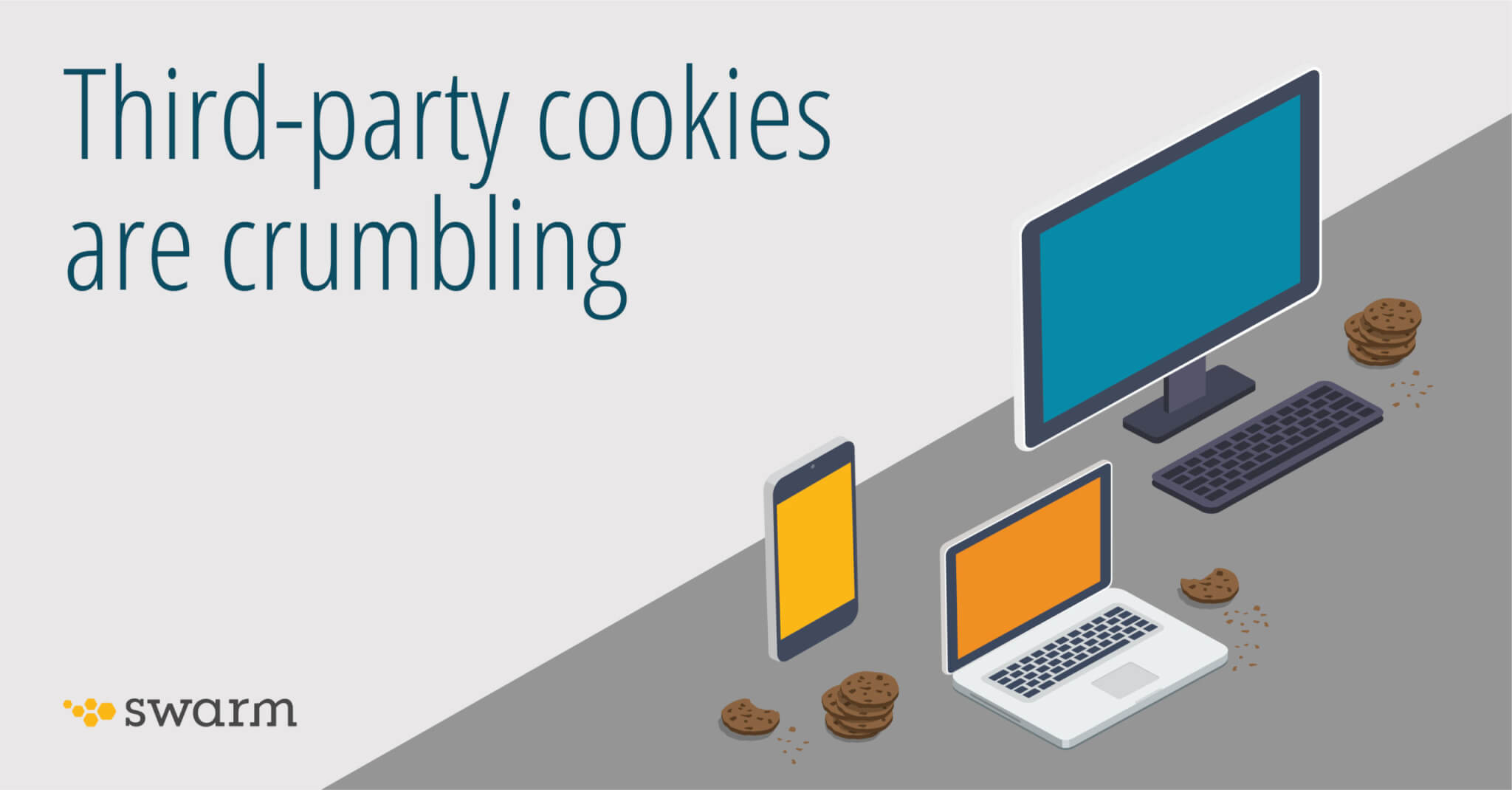If you have been following marketing news in the past few years, you know we are nearing the end of being able to use third-party cookies on Google Chrome. Although other browsers like Safari have been phasing them out for awhile, the amount of users using Chrome has marketers in a panic. Marketers should not panic but look at this as a way to shift strategies in order to respond to changing customer behavior.
What are cookies?
Cookies are simple text files used to track user activity across the internet. For the user, they can enable a better online experience by remembering information on websites to make it easier when you return. For marketers, they are mainly used for analytical purposes and to target users with specific marketing campaigns.
There are two main types of cookies or data: first party and third party. First party cookies/data is information your website collects on its own users.This can include anything in your company’s CRM system or general website or marketing campaign data. First party cookies will NOT be phased out during this process and Google has even mentioned they are vital to online experience. Third party cookies or data is collected through another partner either by purchasing the actual data or installing third-party cookies on your site. These are used to create targeted campaigns and to retarget customers as they visit other sites.
Why the shift in policy?
Google along with other tech companies is responding to the privacy concerns raised by consumers in order to protect public trust in the digital space. There is also mounting pressure from regulatory bodies related to online privacy and how companies track users.
How will it affect my marketing program?
Third party cookies are used mostly for retargeting activities and to create targeted audiences in order to serve more personalized ads. However, first party cookies will not be phased out so you will keep all of the data of users as they navigate your own site. Analytics will also be impacted as we will have less insight into additional behaviors that users take across the internet.
What are the solutions?
Many companies are going to be offering solutions to this problem mostly using your own company’s first party data, however, companies should be implementing data systems in order to better utilize their own data. Google is also rolling out an option known as Privacy Sandbox with a functionality called the Federated Learning of Cohorts (FLoC) to help companies continue to retarget and serve personalized ads. The difference here is that FLoC will provide anonymized cohorts to target instead of the individual user data. There has been a lot of pushback to this new technology due to marketers being forced to use Google’s own first party cookies and data not really being private if marketers are still acting on the data. Other companies are pushing out similar products but many have also raised privacy concerns and are seen as solutions that may not survive the increased regulations on data usage. You should also dust off some older strategies like contextual advertising which targets websites with similar keywords as your own so the ads should still show up on sites related to your own. Right now marketers should determine what marketing activities will be affected and determine strategies for each in order to be prepared for the phase out.

